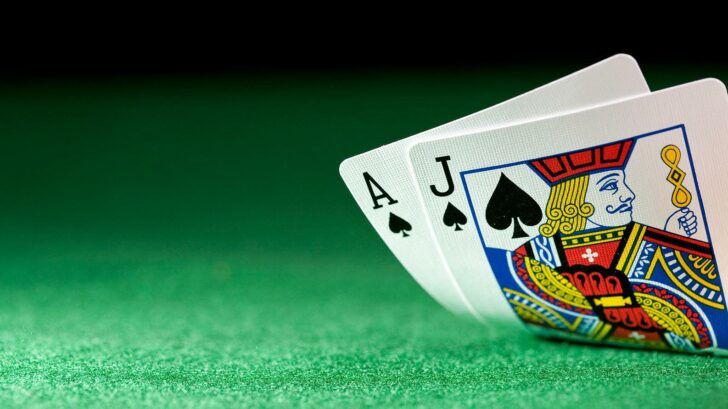4 Losing Blackjack Strategies That Could Be Causing Your Cold Streak

Don’t led losing blackjack strategies get you down. If you want to win, do your homework and stick to proper basic strategy.
Mastering the art of blackjack is like learning how to play the guitar. Once you get the hang of it, it becomes second-nature. But in the early stages of training it requires endless practice and the understanding of tons of small variations.
Most beginning blackjack players struggle to win money at the casino, and in most cases the problem stems from losing blackjack strategies or the use of flawed betting systems.
If you find yourself repeatedly leaving with less than you came with, you may be mistakenly falling for one of these common blackjack mistakes:
Playing at the wrong table
Many beginning blackjack players set themselves up for failure by being unaware of their surroundings at the casino. What do I mean? They don’t know the rule variations enough to know the house edge of each table.
For example, it’s important to know the difference in house edge from single-deck to two and six-deck blackjack. More decks generally mean a higher house edge, as deck penetration is lower and the player most likely will receive fewer face cards and aces.
However, while single-deck blackjack should be the most player-friendly variation, it usually isn’t. The reason is that casinos have started tipping the edge in their favor by paying out 6-5 instead of 3-2 on natural blackjacks, which significantly raises the house edge over the course of an evening.
The standard house edge (when playing Vegas Strip rules) by the amount of decks are as follows: single-deck: 1.36%, 2-deck: .46%, 4-deck: .6%, 6-deck: .64%, 8-deck: .66%. For the single-deck scenario, it is assumed that the payout on blackjack is only 6-5.
Trying too hard not to bust
Some non-expert players mistakenly believe that the #1 priority in blackjack should be to never bust. There is even a system called the “no bust” system, in which the player plays as conservatively as possible in avoiding going over 21.
What is forgotten here is that the goal of blackjack is not to not bust, but to beat the dealer. This means taking risks in the attempt to best the dealer’s hand, and sometimes that results in going over 21.
The no bust blackjack system involves standing on any hard hand of more than 12; when your basic strategy blackjack chart will tell you to almost always hit when you have a hand of less than 17.
Playing too conservatively means you’ll often end up with hands of 16, 17 and 18, not busting but being consistently edged by the dealer. The result of a no bust system is a house edge of almost 4%, bad news for any blackjack player.
Imitating the dealer
At any casino the dealer is going to win more hands than the player. This is the reason that blackjack games have a house edge of between .16% and .7%. Given this inconvenient truth, some players find the solution to be doing exactly what the dealer does.
This means hitting on any hand of sixteen or less (as well as a soft 17), and standing on a 17 or over. There’s nothing wrong with that, but here’s where the system goes haywire: the player never doubles or splits, even if they have a pair of tens.
This has been found to result in a house edge of roughly 5%, significantly higher than the .53% of standard two-deck blackjack games. The reason is that the player needs to capitalize on opportunities to win big, so that doubling and splitting when basic strategy says to do so is essential.
Don’t try to beat the dealer at his own game. Winning at blackjack requires knowing when to maximize the amount of money you have on the table. Big payouts will follow.
Taking out insurance
Insurance is a side bet the player can take against a dealer blackjack. If the dealer’s upcard is an ace, the player can put up half his original bet as insurance against the other card having a value of ten (ten, jack, queen, king).
If the dealer does land a blackjack the player will receives a 2-1 return on his wager. Consider the following scenario: the player wagers $10, and decides to insure again dealer blackjack with an additional $5.
The dealer receives a blackjack, so wins the player’s $10 but pays out 2-1 on the $5 insurance (adding up to $10), so even though the dealer had a blackjack the player ends up breaking even.
This sounds like a decent proposition, the only downside is that the dealer’s chances of landing a blackjack are actually fairly low. When the dealer has an ace upcard, his mathematical chances of having a ten-value card under that ace are 4/9.
According to mathematical probability, if you wager $5 insurance on 130 hands, you will be rewarded with even money on 40 of them. On the other 90 your insurance amounts to free money for the house. If you want to win, it’s best to stick to your blackjack chart and forget about insurance.




